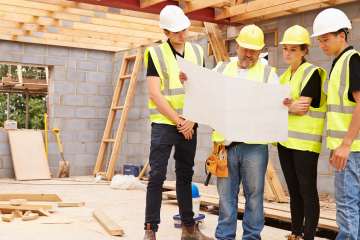How Long Does a Single-Storey vs Double-Storey Extension Take in Melbourne?
Target location: Melbourne, Victoria, Australia
I’ll be honest—when I first decided to extend my home, I had dreams of sipping lattes in my new living room within a few short months. Spoiler alert: I was off by… quite a bit. Between council paperwork, tradie scheduling, and Melbourne’s unpredictable weather (rain one minute, blazing sun the next), house extensions take time—especially if you’re adding a whole new level. So, how long does it really take to complete a single-storey vs double-storey extension in Melbourne? Let’s break down the real-world timelines, from permits to handover, so you can plan (and survive) your build with your sanity intact.
Overview: Why Timelines Vary in Melbourne
No two extensions are alike. A straightforward single-storey living room addition in Glen Iris will move faster than a double-storey addition to a heritage terrace in Fitzroy. Melbourne’s unique mix of weather, planning regulations, and block types means your timeline will depend on everything from soil conditions to council approvals.
Generally, a single-storey extension can take anywhere from 4 to 7 months, while a double-storey extension may stretch to 6 to 12 months (sometimes longer if complex). But let’s unpack what happens before, during, and after construction—because the “building” phase is only half the story.
Key Stages of an Extension Project
Before comparing single vs double-storey timelines, it’s worth understanding the main stages every Melbourne extension goes through:
- Concept & Design (2–6 weeks): You work with a designer or architect to sketch layouts, define your goals, and get an early cost estimate.
- Planning & Approvals (6–12 weeks): If required, your council reviews the design for compliance with overlays, setbacks, and neighbourhood character.
- Building Permits (1–3 weeks): A building surveyor checks the technical details and issues a permit for construction to begin.
- Construction (4–9 months): The physical building work—from demolition to handover—happens in carefully managed stages.
- Final Inspection & Handover (1–2 weeks): The building surveyor signs off, and your dream extension becomes officially livable.
Timeline for a Single-Storey Extension
Single-storey extensions are the simpler, quicker option for most Melbourne homes. With fewer structural complexities and easier access, they can often be completed in 5 to 7 months from the start of construction—assuming approvals are already sorted.
Typical Single-Storey Timeline
- Design & Documentation: 4–6 weeks
- Permits & Engineering: 6–8 weeks
- Site Preparation & Demolition: 1–2 weeks
- Slab or Subfloor: 2–3 weeks (weather-dependent)
- Framing & Roof: 3–5 weeks
- Lock-up Stage (windows, doors, cladding): 2–3 weeks
- Plumbing, Electrical & Insulation: 2–4 weeks
- Internal Finishes (plaster, tiles, painting): 4–6 weeks
- Fit-Off & Final Touches: 1–2 weeks
Total (after permits): Around 20–30 weeks, or roughly 5–7 months.
Simple rear living extensions or open-plan kitchen/dining additions often fall on the shorter end of the scale, while those involving bathrooms, structural steel, or tricky access take longer.
Timeline for a Double-Storey Extension
Adding an upper level adds complexity—and time. A double-storey extension typically takes 7 to 12 months once on-site, not including the pre-construction phase.
Typical Double-Storey Timeline
- Design & Documentation: 6–10 weeks (more engineering)
- Planning & Building Permits: 8–14 weeks
- Demolition & Site Preparation: 2–3 weeks
- Foundations & Steelwork: 3–5 weeks
- Lower-Level Framing: 3–4 weeks
- Upper-Level Framing & Roof: 4–6 weeks
- Lock-up Stage: 3–5 weeks
- Rough-ins (plumbing, electrical, HVAC): 3–5 weeks
- Internal Finishes & Plastering: 6–8 weeks
- Joinery, Painting & Fit-Off: 3–4 weeks
- Final Inspection & Handover: 1–2 weeks
Total (after permits): Around 30–50 weeks, or roughly 7–12 months.
Double-storey projects require additional scaffolding, access management, and weather protection—all of which slow things slightly compared to ground-level work. The payoff? Twice the space without eating into your backyard.
What Affects Extension Timeframes
Even with the best planning, no two extensions follow identical timelines. Here are the biggest factors that can speed up—or seriously slow down—your build:
- Permitting delays: Council planning can take longer if your property has a heritage overlay or neighbour objections.
- Design complexity: High-end finishes, custom joinery, or unusual rooflines extend build times.
- Structural challenges: Older Melbourne homes often require re-stumping or reinforcing existing walls.
- Weather: Winter rain and wind can delay concrete pours, roofing, or exterior cladding.
- Trades availability: Peak building seasons (spring and early summer) can stretch schedules by weeks.
- Material lead times: Imported tiles, windows, or cabinetry may take months to arrive.
- Scope changes: Mid-project design tweaks are one of the most common causes of delay—stick to your plan once construction starts!
How Melbourne’s Weather Impacts Build Time
Anyone who’s lived through a Melbourne winter knows the saying: “Four seasons in one day” isn’t just a cliché. For builders, that means rain delays, wind restrictions on cranes, and occasional cold snaps that slow drying times for concrete and paint.
Winter builds: Expect minor slowdowns during June–August. Builders may need to reschedule external works or protect slabs from excess moisture.
Summer builds: Longer daylight hours help productivity, but heatwaves can also cause delays—especially for trades like roofing and concreting.
Smart scheduling and weather protection strategies (temporary roofing, sealed work zones) can minimise most of these issues, and experienced builders factor them into their programs.
Tips for Keeping Your Project on Schedule
- Lock in design decisions early: Every delayed choice—tiles, tapware, colours—can stall trades down the line.
- Choose an experienced builder: Builders familiar with Melbourne councils and soil types can navigate issues faster.
- Communicate regularly: Weekly check-ins with your builder prevent misunderstandings and keep momentum.
- Secure permits early: Submit planning applications as soon as your concept design is ready.
- Avoid mid-build changes: Variations cause rework, delays, and extra costs.
- Plan for inspections: Surveyors have to approve key stages before work continues—schedule these in advance.
- Allow realistic contingency time: Always add 10–15% buffer to your expected completion date.
Remember: a great builder doesn’t just build quickly—they build efficiently, safely, and in the right sequence. Rushing is how mistakes happen.
FAQ: Common Questions About Extension Timelines
Is a single-storey always faster?
Almost always, yes. Single-storey extensions require less structural steel, simpler foundations, and easier access for trades.
How long does council approval really take?
For straightforward suburbs, 6–8 weeks is typical. Heritage or inner-city councils (like Yarra or Boroondara) can take up to 12 weeks or more.
Can I stay in my house during construction?
For single-storey extensions, usually yes—especially if works are confined to the rear. For double-storey builds involving major demolition, temporary relocation may be necessary.
What if there are delays?
Delays can come from weather, design changes, or material shortages. A clear contract with milestone payments and agreed timelines helps manage expectations.
How do builders handle inspections?
Building surveyors inspect at key milestones—foundation, frame, waterproofing, and final. Missing or failed inspections can halt progress until rectified.
Can I speed things up?
Having all your documentation, approvals, and selections finalised before breaking ground is the biggest time-saver. And avoid scope creep!
Final Thoughts & Next Steps
Building an extension in Melbourne is exciting—but patience pays off. On average, a single-storey extension takes 5–7 months, while a double-storey extension runs 7–12 months once permits are in hand. Add another couple of months for planning and approvals, and you’ve got a realistic roadmap for your project.
The best way to avoid timeline blowouts is to partner with an experienced, transparent builder who knows the Melbourne market inside out. They’ll help you plan smartly, manage weather risks, and keep communication clear from day one.
When you’re ready to extend your home—whether up or out—chat with the friendly team at All Home Renos. They’ll guide you through design, permits, and construction with honest timelines and no surprises—so you can enjoy your dream home sooner (and with your sanity intact).


0 Comments